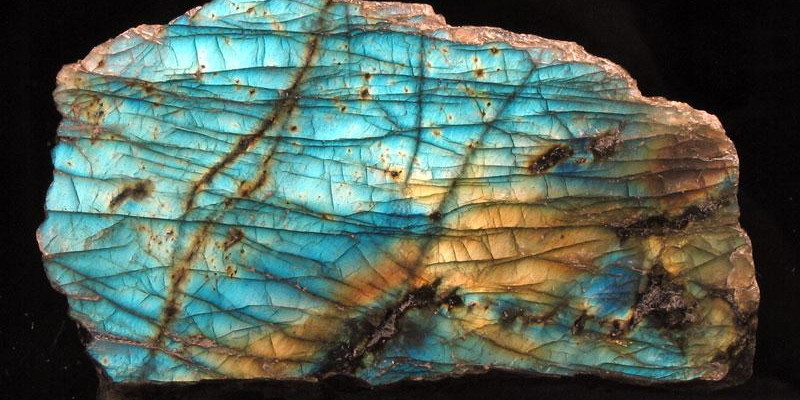Labradorite, a mesmerizing stone known for its remarkable play of colors, has captivated humans for centuries. This feldspar mineral, which displays a stunning spectrum of colors due to the phenomenon known as labradorescence, is more than just a visual marvel; it is imbued with rich symbolism and metaphysical properties that make it a prized gemstone in various cultures around the world.
Origins and Discovery
Labradorite was first discovered in the late 18th century on the Isle of Paul, near Nain, Labrador, Canada, which is how it received its name. The indigenous peoples of Canada had known about and used the stone for its mystical properties long before it was introduced to European settlers. Since its discovery, it has been found in other parts of the world, including Finland, Russia, Madagascar, and Australia, each locale offering stones with unique characteristics.
Physical and Optical Properties
Labradorite belongs to the plagioclase series of feldspar minerals and is characterized by its mid to dark gray base color, with flashes of colors ranging from vivid blues, greens, and golds to rare shades of pink or purple. These iridescent colors appear as the light interacts with thin layers within the stone, creating a dazzling effect that changes with the angle of view. This phenomenon, known as labradorescence, is the hallmark of labradorite and is a key factor in its appeal and mystical attributes.
Symbolism and Metaphysical Properties
Labradorite is often referred to as a stone of transformation, believed to be a powerful companion through change, imparting strength and perseverance. It is associated with the Third Eye Chakra, enhancing intuition and psychic abilities, and is said to help its wearer tap into a higher state of consciousness. Furthermore, labradorite is thought to protect against negativity and the misfortunes of this world, providing a shield within the aura from external negative energies.
Uses and Applications
Beyond its metaphysical properties, labradorite is a popular choice in jewelry and decorative objects. Its captivating appearance makes it an ideal stone for pendants, rings, and other adornments where the play of light can be appreciated. Additionally, polished labradorite slabs and specimens are often displayed as art or used in meditation practices to enhance spiritual connection.
Care and Maintenance
Labradorite ranks between 6 and 6.5 on the Mohs hardness scale, which means it requires some care to maintain its beauty. It should be protected from scratches and sharp blows, and stored separately from harder gemstones. Cleaning should be done with mild soap and water, avoiding harsh chemicals and ultrasonic cleaners.
Conclusion
Labradorite, with its ethereal beauty and profound symbolism, continues to enchant and inspire those who encounter it. Whether sought after for its metaphysical properties, used in jewelry, or simply admired for its unique appearance, labradorite stands as a testament to the natural world’s ability to create objects of incredible beauty and depth. As a stone of transformation, it serves as a reminder of the constant change and the possibilities that lie in embracing the unknown.

